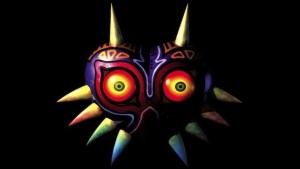Zelda Theory: Five Stages of Grief
Posted on September 12 2015 by Alasyn Eletha
 The Legend of Zelda: Majora’s Mask is probably one of the deepest, most meaningful and, in some respects, maybe even the darkest game of the Zelda franchise despite it’s seemingly happy ending. There are several different theories circulating the game’s story, one of which we’ve all probably heard a few different opinions on, in which Link is cycling through the five stages of grief during his time in Termina. The concept has been tackled by a number of theorists, and sometimes its difficult to keep track of the real interpretation between Termina and the five stages of grief. However, we’re bringing back Vortex from her YouTube channel VortexxyGaming to not only allow her to spell out the theory for us, but to help us better understand whether it’s a valid theory or not. Make the jump to hear what Vortex has to say.
The Legend of Zelda: Majora’s Mask is probably one of the deepest, most meaningful and, in some respects, maybe even the darkest game of the Zelda franchise despite it’s seemingly happy ending. There are several different theories circulating the game’s story, one of which we’ve all probably heard a few different opinions on, in which Link is cycling through the five stages of grief during his time in Termina. The concept has been tackled by a number of theorists, and sometimes its difficult to keep track of the real interpretation between Termina and the five stages of grief. However, we’re bringing back Vortex from her YouTube channel VortexxyGaming to not only allow her to spell out the theory for us, but to help us better understand whether it’s a valid theory or not. Make the jump to hear what Vortex has to say.
As Vortex explains in her video, the five stages of grief is a concept that was created by Elisabeth Kübler-Ross. They include denial, anger, bargaining, depression, and acceptance. Beginning with denial, it is believed that this stage is portrayed by the people of Clock Town as they resist the inevitable fall of the moon hovering above them to the point where they just can’t avoid it anymore. Even still, after most of the townsfolk leave, some of them remain to wait out the Carnival of Time. Anger is portrayed by the Deku of Woodfall. They find that their princess is missing and automatically point fingers-stubby paws?-towards the monkey. The Deku are so blinded with rage that they do not even realize that the monkey is actually trying to help them in finding their lost princess.
The third stage of grief is bargaining, which seems to be visible in Snowhead. Darmani, the leader of the Gorons, is aware of his death, but fears leaving his people behind, coming to the point of bargaining for his life back. Of course all Link can do is heal Darmani’s pain with the Song of Healing, and Darmani seems to settle with the bargain of leaving Link to care for his people in his place. The fourth stage, depression, occurs when our hero finds Lulu in Great Bay, a Zora lost at heart when her eggs are stolen from her. Everyone close to her is concerned for her as she isolates herself and seems to have lost her voice. Only when Lulu hears the melody of her children is she brought out of her depression. The final stage of grief is brought about when Link is no longer facing the pain of others but his own. Link finds acceptance of his grief in Ikana Canyon when he comes in possession of the song Elegy of Emptiness and the light arrows and is finally able to bring himself out of his own darkness, just as he did for others in Termina.
Now that we know where the five stages of grief could be interpreted within the story of Majora’s Mask, we have to ask ourselves if it’s a solid theory. Vortex doesn’t think so. In order for someone to experience the five stages of grief, it must be from what they feel themselves. Instead, throughout Termina, Link seems to find that these different stages are being developed by others, whether it’s the Deku, the Zora, or the people of Clock Town. The theory only states that Link is found within the stage of acceptance towards the end of the game. Vortex also explains that Kübler-Ross believed the different stages could overlap or not exist at all, that everyone processes their grief differently. It’s easy to say that the habitants of Termina are suffering their own grief, but not that Link himself is moving through each stage as he tries to save this alternate universe.
What do you guys think? Is Link actually experiences the five stages of grief during his time in Termina? Personally, I think it’s plausible, that Link can find his connections to others during his journey and it’s easier for us to see these stages in other people and not the hero himself. But that’s just my own opinion. Is this just too much speculation and the reality is that the game creators didn’t produce this game to be analyzed so critically? Who knows? But feel free to let us know what you think and share your opinions in the comments below.
Source: YouTube.



